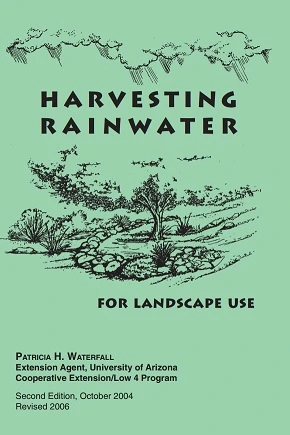
Historically, harvested rain water provided water for drinking, landscape watering, and for agricultural uses. Once urban areas started to develop, centralized water supply systems replaced the need to harvest water. More recently, people have become reacquainted with water harvesting, using it to provide water for residential and commercial landscapes.
Harvesting rainwater can reduce the use of drinking water for landscape irrigation. It is also an effective water conservation tool and proves more beneficial when coupled with the use of native, low-water-use and desert-adapted plants. Additionally, rainwater is available free of charge and puts no added strain on the municipal supply or private wells.
Throughout Arizona and the arid Southwest, annual and seasonal precipitation varies widely and is often scarce when plant water requirements are high during the summer months. In the desert regions of Arizona, approximately half of the annual rain falls in winter, the remainder during the summer monsoons. At higher elevations, in addition to the monsoons, winter precipitation may come in the form of snow providing opportunities for water harvesting when it melts.
The Phoenix and Tucson areas receive an average of 8 and 12 inches of annual rainfall, respectively. Along the Colorado River, cities such as Yuma and Bullhead City receive only 3 to 6 inches. At higher elevations annual rainfall varies from as low as 15 inches to as high as 23 inches. Only native and some plants that can flourish in our soils and climate can live on the annual rainfall received. Plants from non-arid climates require a great deal of supplemental irrigation. There are many water harvesting opportunities on developed sites and it can easily be planned into a new landscape during the design phase. Homes, schools, parks, parking lots, apartment complexes, and commercial facilities all provide sites where rainfall can be harvested. Even very small yards can benefit t from water harvesting. Whether your landscape is large or small, the principles outlined in this manual apply.
Key words: water harvesting, active, passive, supply calculations, demand calculations, first flush,

